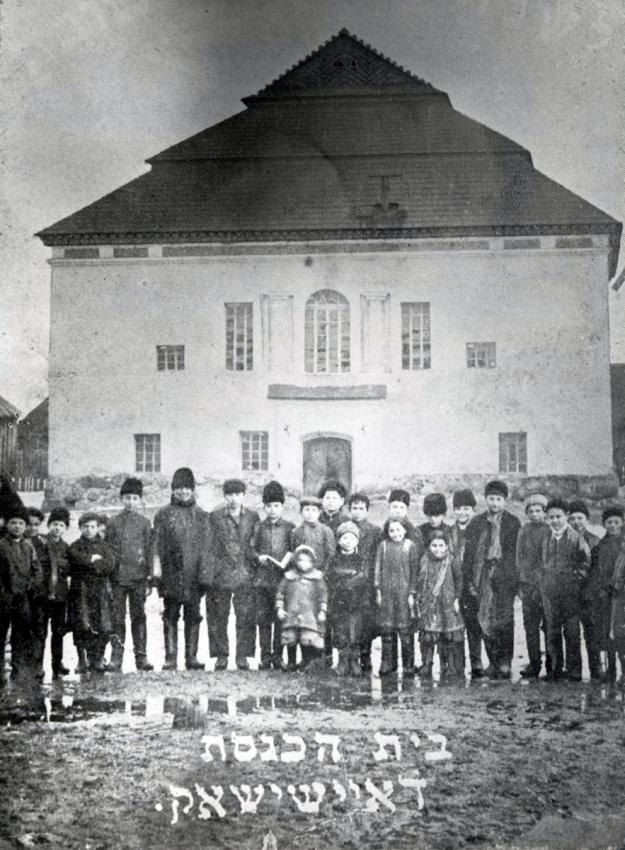
Standing in front of the synagogue are members of the local Shneider, Sonenson, Wilenski, Kabacznik and Reznik families and Shlomo Farber from Olkenic.
Photographer: Yitzhak Uri Katz
Yad Vashem Archives P.65.1/39/RN34-2

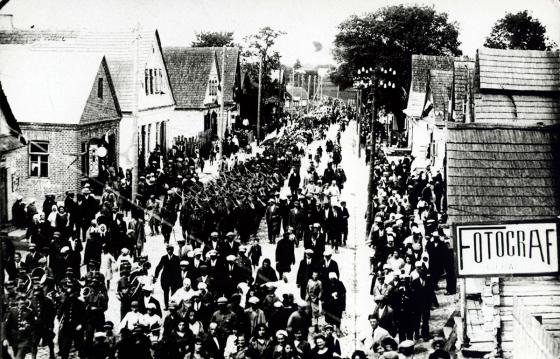
On the right is the studio of the Jewish photographer Raphael Lejbowicz.
Yad Vashem Archives P.65.1/33/RN27-17

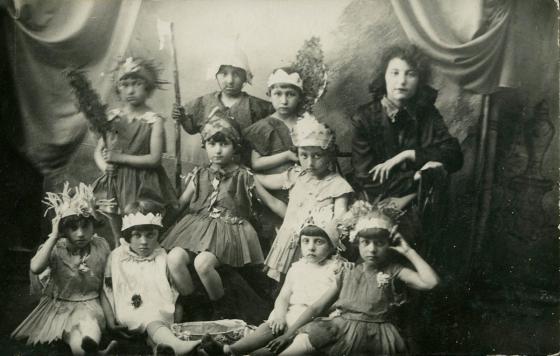
The teacher and founder of the kindergarten, Rachel Kaleko, later made Aliyah to Erez Israel.
Photographer: Yitzhak Uri Katz
Yad Vashem Archives P.65.1/28/RN18-66

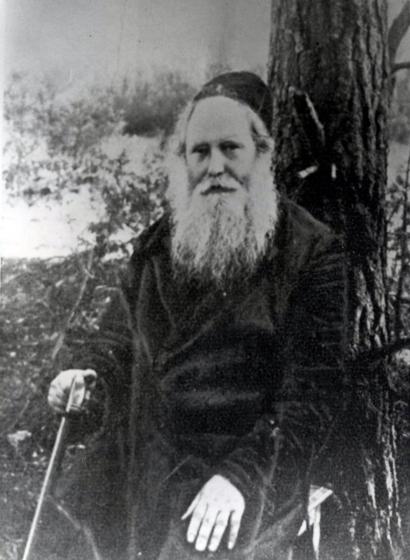
Symen Rozowski (b. 1874 in Kapyl, Belarus) was an ardent religious Zionist and a member of the Mizrahi movement. Served as the Rabbi of Eishishok since 1922. Murdered in September 1941.
Photographer: Ben Zion Szrejder
Yad Vashem Arcives P.65.1/39/RN34-1

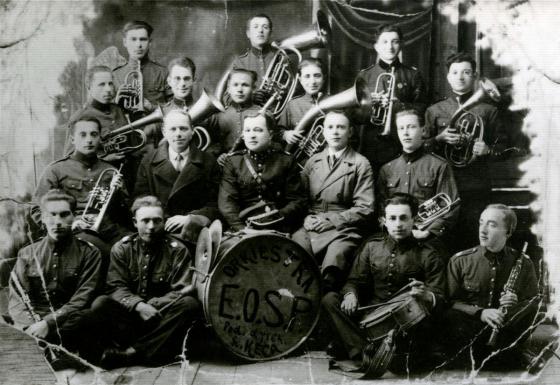
The orchestra included both Poles and Jews.
From Right to Left:
Top Row: First: Bere-Liebke Garmenishki; Second: Shepke (Shabbtai) Sonenson, murdered in September 1941; Third: Motl Narodowicz, Survived the Holocaust as a Partisan.
Second row: Second: Menachem Politacki, Immigrated to Palestine before the war.
Third row: Third: Gotowicky, the Polish conductor of the orchestra; Fifth: Eishke Levin.
Photographer: Ben Zion Szrejder
Yad Vashem Archives P.65.1/18/RN2-49

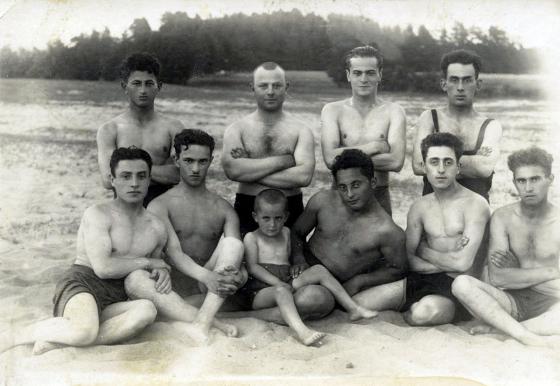
The club's leader, Leibke Sonenson (Back row, left), was murdered in September 1941, as well as the majority of the young men in the photo.
Yad Vashem Archives P.65.1/ 20/ RN9-58

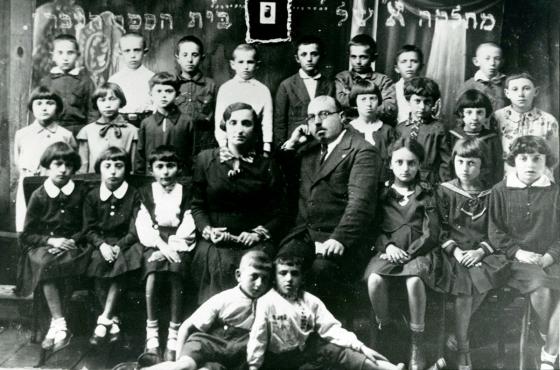
School Principal Yaakov Botwinick (middle). With the exception of one child who immigrated to the USA before the war, all the people in the photo were murdered.
Yad Vashem Archives P.65.1/2/RN1-28

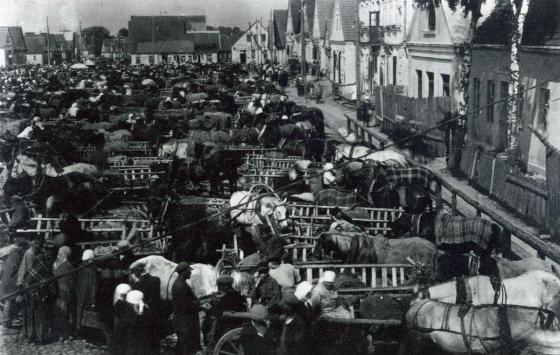
Photographer: Ben Zion Szrejder
Yad Vashem Archives P.65.1/7/RN2-159

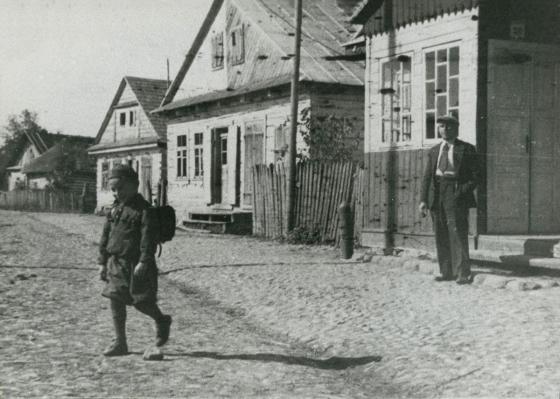
His father, Benyamin Kabacznick, watches him in front of their house. Both were killed by the Polish Armia Krajowa in 1944.
Photographer: Raphael Lejbowicz
Yad Vashem Archives P.65.1/25.1/RN14-61

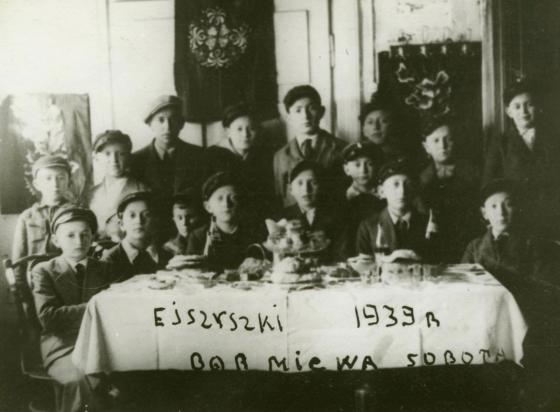
All the participants were murdered in the Holocaust except of the Bar Mitzvah boy.
From Left to Right:
Top row: Third: Hillel Botwinik, Avremele's brother, murdered in September 1941; Fifth: Yitzhak Botwinik, Avremele's brother, murdered in September 1941.
Bottom row: First: Elisha Koppelman, killed by the Polish Armia Krajowa in 1944; Forth: Moshe Bastunski, Murdered in September 1941; Fifth: Avremele Botwinik, Survived as a Partisan.
Photographer: Ben Zion Szrejder
Yad Vashem Archives P.65.1/2/RN1-40

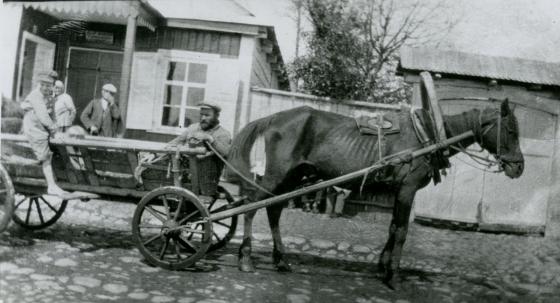
Yoske survived in hiding. Honke was murdered in September 1941 together with his four siblings and mother.
Photographer: Ben Zion Szrejder
Yad Vashem Archives P.65.1/1/RN1-115

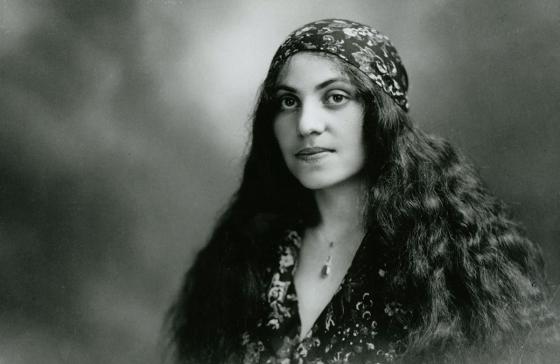
Szeina was fluent in Hebrew, Yiddish, Russian, Polish and German and was greatly admired by the Germans during the First World War. She owned a hotel that became one of the Gestapo headquarters during the Nazi occupation. Even though the Germans liked her perfect German, good food and comfortable accommodation she was murdered in September 1941.
Photographer: I. Kendel
Yad Vashem Archives P.65.1/49/RN46-21

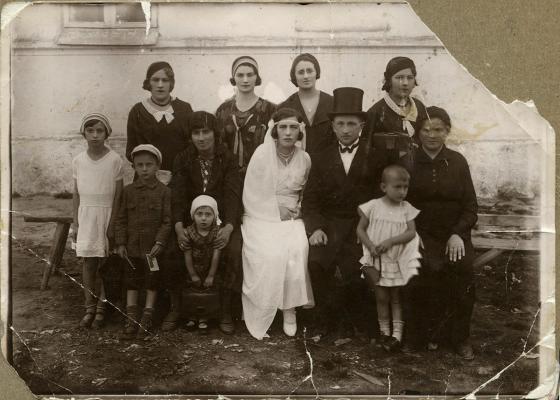
Bat Sheva was the daughter of Rabbi Symen Rozowski. Sitting next to her is her mother Rebbezin Miriam Rozowski, Next to the groom is his Mother Dvorah Zalmanovitz. Standing behind them are Bat Sheva's sister-in-law and David's sisters. In the front row are their little nephews and nieces. All the people seen in the photograph were murdered in the Holocaust: The Rozowski family in September 1941, Bat Sheva, David and their three children were murdered in Treblinka.
Photographer: Ben Zion Szrejder
Yad Vashem Archives P.65.1/39/RN34-3

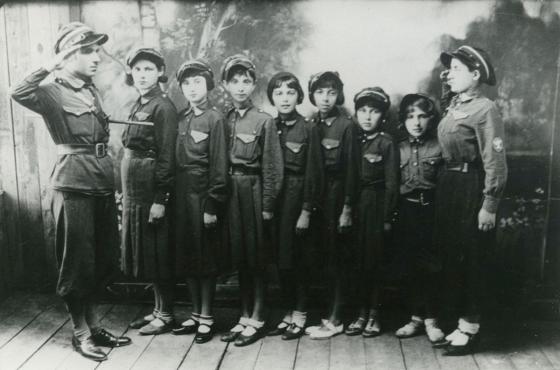
From left to right: First: Zvi-Hirske Schwartz, survived as a Partisan; Second: Schwartz, Zvi's sister, murdered in September 1941; Third: Sarah'le Tatarski, murdered in September 1941; Fifth: Portnoy, murdered in September 1941; Sixth: Matke Shlepak, murdered in September 1941; Seventh: Koppelman, murdered in September 1941; Eighth: Hannah Sczczuczynski, killed by the Polish Armia Krajowa in 1944; Ninth: Shifra Berczanski, made Aliya to Eretz Israel before the war.
Photographer: Ben Zion Szrejder
Yad Vashem Archives P.65.1/17/RN8-35

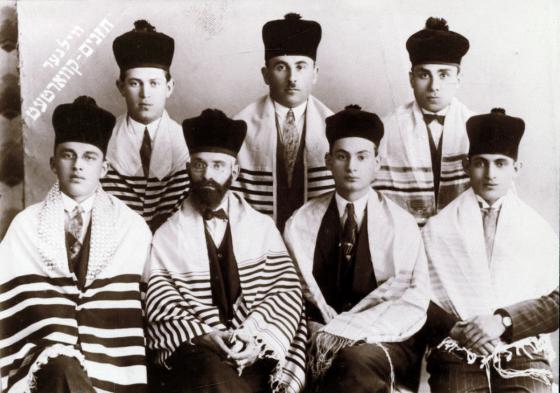
Gedalia is standing at the far left. He was murdered in Auschwitz-Birkenau.
Yad Vashem Archives P.65.1/40/RN36-7

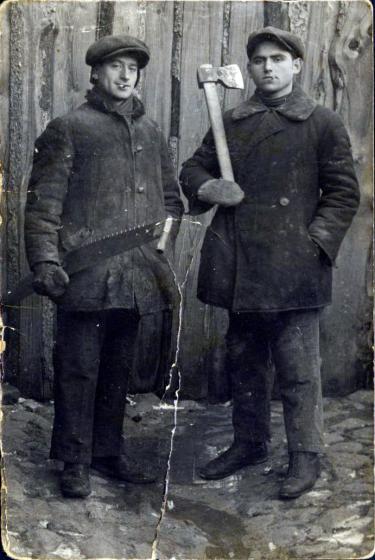
Pessah was married to Eishishokian Sarah Plotnik. When they immigrated Sarah became one of the last people from Eishishok to make Aliya to Erez Israel before the war. Yechiel Blacharowicz, an Eishishokian that worked with Pessah at the Hachsharah did not get an immigration certificate and was murdered in September 1941.
Yad Vashem Archives P.65.1/74/RN72-23

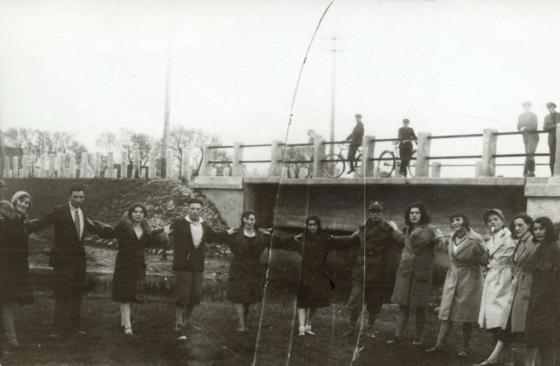
From right to left: First: Fania Botwinik, murdered in the Holocaust; Second: Golda Kabacznik, murdered in the Holocaust; Third: Shepke Sonenson, murdered in the Holocaust; Fourth: Miriam Koppelman, died natural death; Seventh: Szeina Blacharowicz, survived in hiding; Ninth: Motke Burstein, murdered in the Holocaust.
Photographer: Ben Zion Szrejder
Yad Vashem Archives P.65.1/41/RN38-3

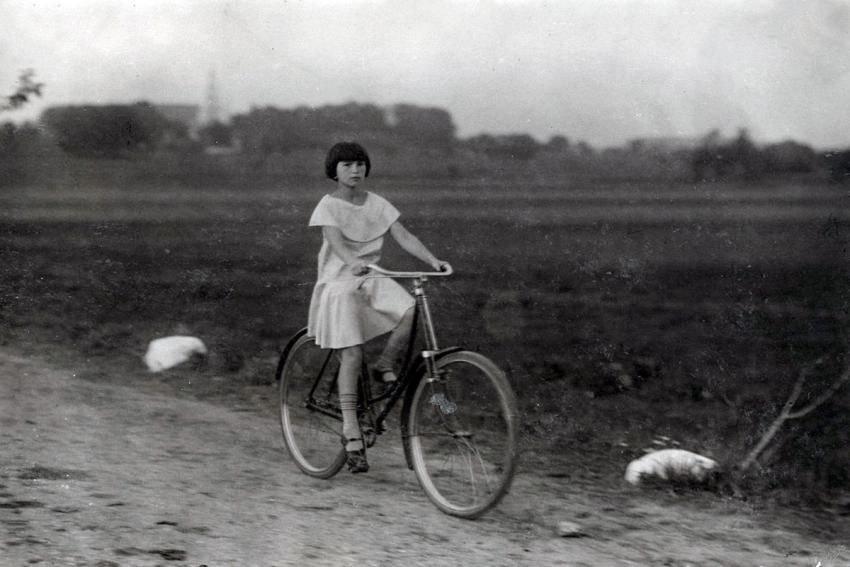
In 1933 she joined her father and immigrated to the USA.
Photographer: Rephael Lejbowicz
Yad Vashem Archives P.65.1/25.1/RN14-14

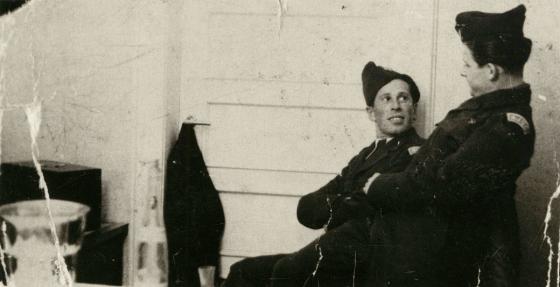
He participated in the Battle of Stalingrad, where he was wounded, and was highly decorated for his combat performance.
Yad Vashem Archives P.65.1/31/RN20-1

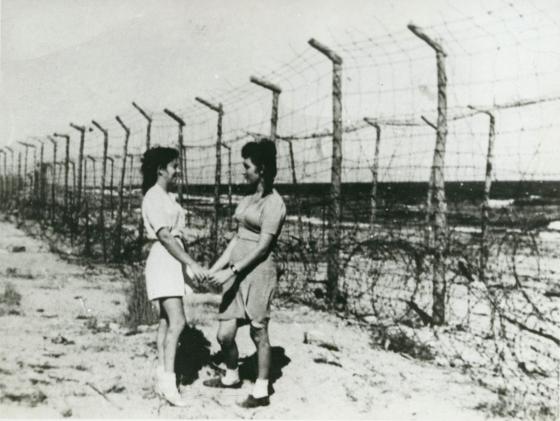
Zlatke is on the left, with her friend Leah Slodivnik, a survivor from Radun.
Yad Vashem Archives P.65.1/51.1/RN52-44







